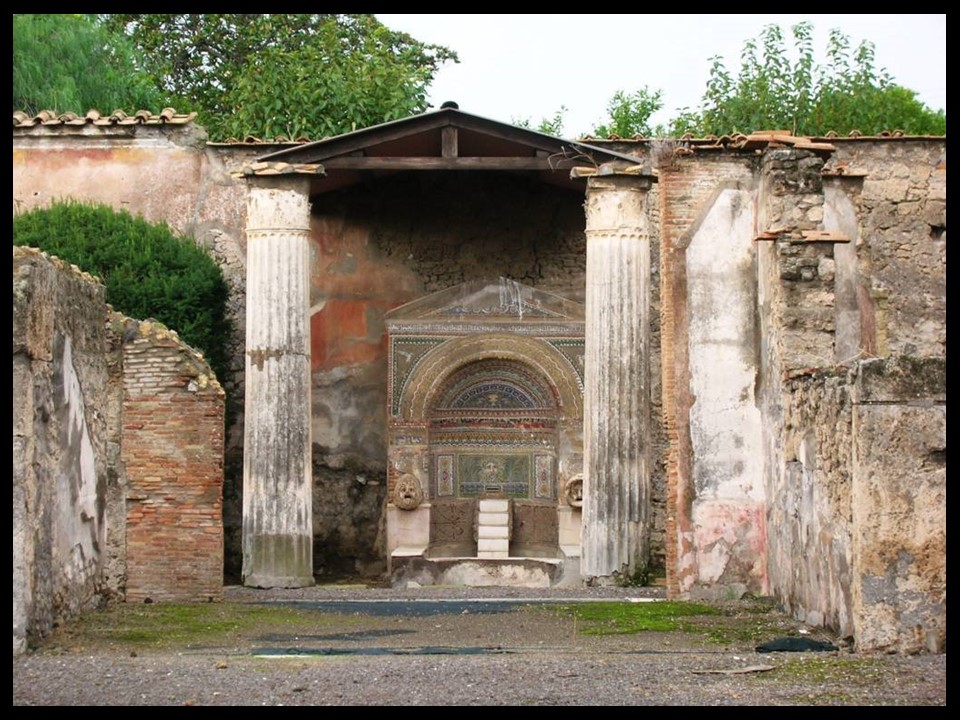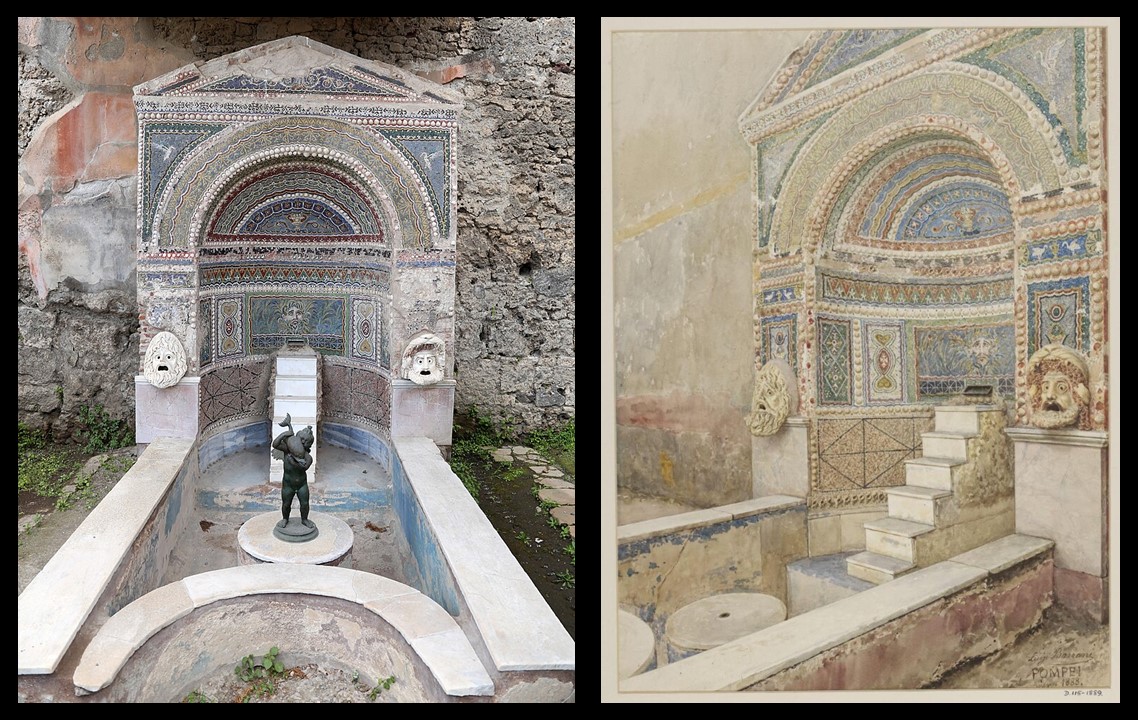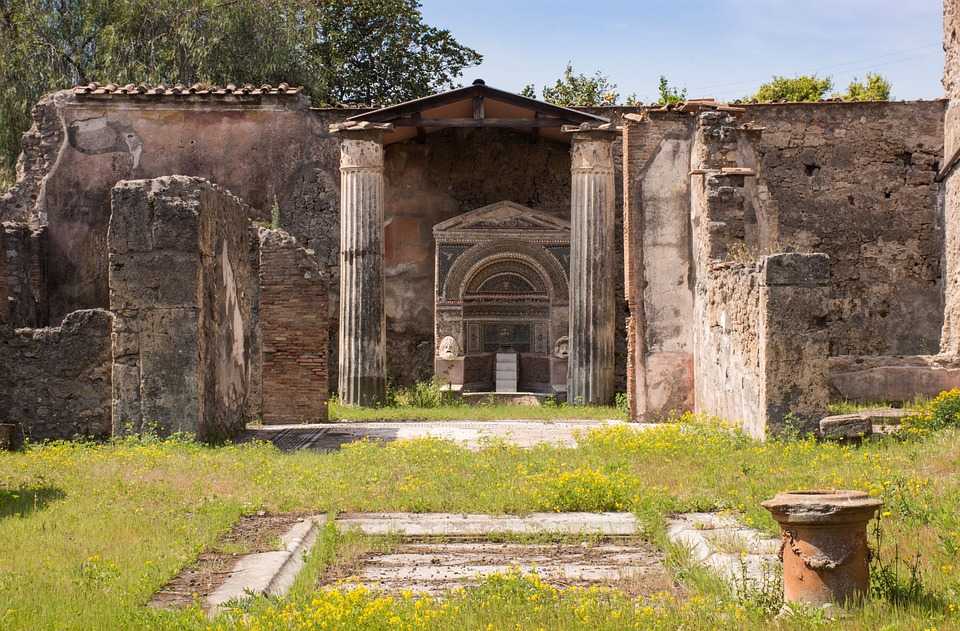The Domus of the Small Fountain, located along Via di Mercurio in Pompeii, stands as a testament to the artistic and architectural sophistication of ancient Roman private residences. Belonging to Helvius Vestalis, a wealthy fruit merchant (pomarius), this house is one of the city’s oldest, dating back to the 1st century BCE.

Key Architectural Features
The house preserves the classic Roman atrium layout, featuring a vestibule, an atrium with an impluvium (rainwater collection basin), and a central tablinum. These spaces exemplify Roman engineering and social customs, with the atrium serving as both a practical and ceremonial hub of the household.

The Iconic Small Fountain
The house derives its name from its exquisite fountain, a masterpiece of ancient artistry. Decorated with vibrant mosaics and shells, it features a bronze statue of a fisherman and Eros, epitomizing Roman garden aesthetics. The fountain highlights the wealth and refined taste of its owner, while its intricate design demonstrates the era’s craftsmanship.

Frescoes of the Peristyle
Surrounding the peristyle are striking frescoes depicting panoramic landscapes, including a maritime cityscape—a common theme in Pompeian garden decor. These frescoes not only provided visual delight but also conveyed the owner’s status and connection to the broader Mediterranean world.

The Domus of the Small Fountain offers an intimate look at Pompeii’s luxurious domestic life, blending practicality with artistic splendor. Today, it continues to captivate historians and visitors, preserving the legacy of an ancient city frozen in time.

